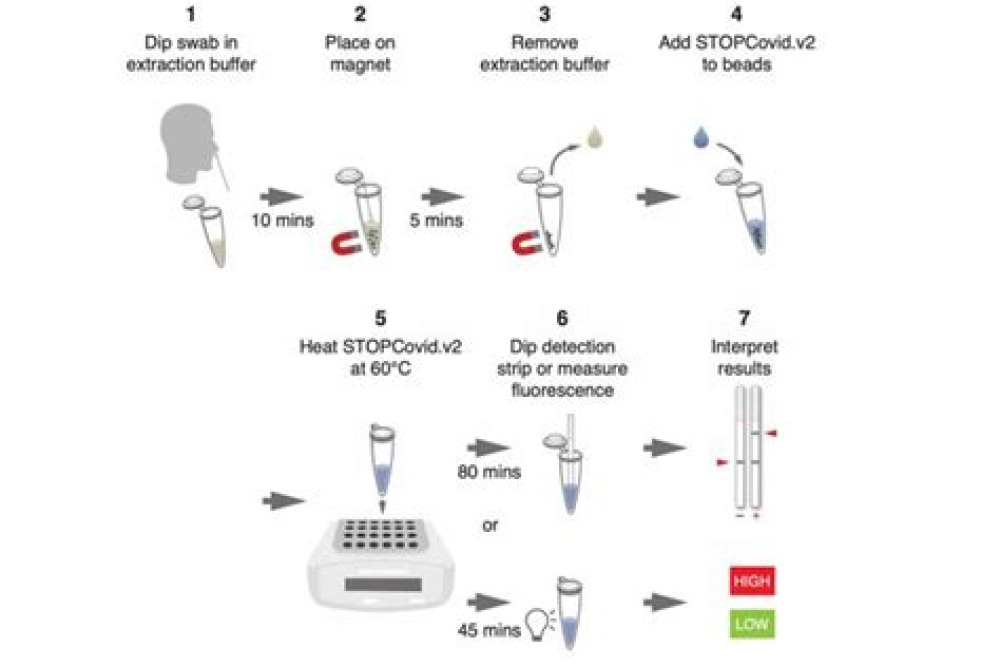Authors: Laura E. Lamb ,Sarah N. Bartolone,Elijah Ward,Michael B. Chancellor
Abstract
Novel Corona virus/Severe Acute Respiratory Syndrome Coronavirus 2 (SARS-CoV-2 or 2019-nCoV), and the subsequent disease caused by the virus (coronavirus disease 2019 or COVID-19), is an emerging global health concern that requires a rapid diagnostic test. Quantitative reverse transcription PCR (qRT-PCR) is currently the standard for SARS-CoV-2 detection; however, Reverse Transcription Loop-Mediated Isothermal Amplification (RT-LAMP) may allow for faster and cheaper field based testing at point-of-risk. The objective of this study was to develop a rapid screening diagnostic test that could be completed in 30–45 minutes. Simulated patient samples were generated by spiking serum, urine, saliva, oropharyngeal swabs, and nasopharyngeal swabs with a portion of the SARS-CoV-2 nucleic sequence. RNA isolated from nasopharyngeal swabs collected from actual COVID-19 patients was also tested. The samples were tested using RT-LAMP as well as by conventional qRT-PCR. Specificity of the RT-LAMP was evaluated by also testing against other related coronaviruses. RT-LAMP specifically detected SARS-CoV-2 in both simulated patient samples and clinical specimens. This test was performed in 30–45 minutes. This approach could be used for monitoring of exposed individuals or potentially aid with screening efforts in the field and potential ports of entry.
Introduction
The recent Novel Corona virus/Severe Acute Respiratory Syndrome Coronavirus 2 (SARS-CoV-2 or 2019-nCoV) pandemic, and the subsequent disease caused by the virus (coronavirus disease 2019 or COVID-19), has generated global concern given its rapid spread in multiple countries and possible fatal progression of the infection. Initially, many patients reported exposure at a large seafood and animal market in Wuhan, China, suggesting animal-to-person transmission of the virus. However, since then many patients have reported no exposure to animal markets, indicating that person-to-person transmission is occurring.
SARS-CoV-2 infection is difficult to diagnose early in infection as patients can remain asymptomatic or present with non-specific clinical symptoms including fever, cough, or shortness of breath. Symptoms may appear in as few as 2 days or up to 2 weeks after exposure [1]. Quantitative reverse transcription PCR (qRT-PCR) for COVID-19 in respiratory samples is currently the standard for diagnostic molecular testing. However, this requires expensive equipment and trained personnel.
For More Information: https://journals.plos.org/plosone/article?id=10.1371%2Fjournal.pone.0234682
